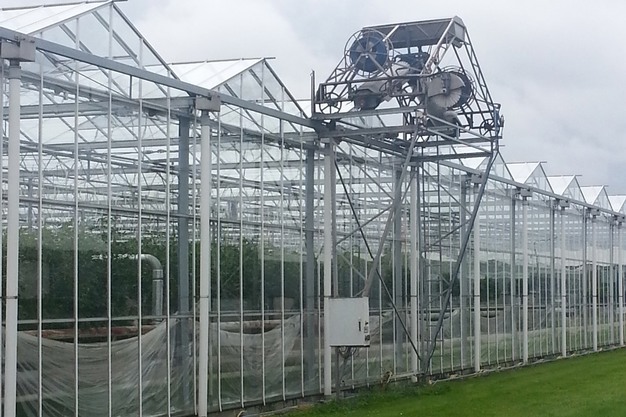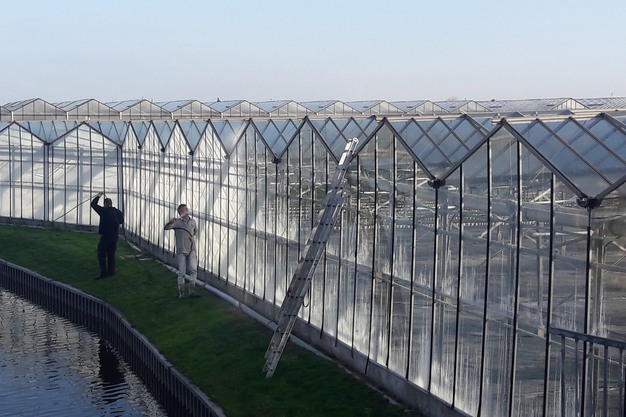Health
Search engine pulls ads promoting controversial weight loss drug
|
|
Shonky websites purporting to sell an in-demand Hollywood weight loss drug have been appearing above health warnings in Australian search engine results, as the regulator continues to crack down on the illegal sale of Ozempic.
The Therapeutic Goods Administration (TGA) confirmed it was contacting search engines and social media companies about content promoting semaglutide, better known by its brand name Ozempic, as part of its ongoing investigations into scams relating to the drug.
The TGA has asked Australians to be wary of businesses claiming to sell the prescription appetite suppressant injection online, amid reports of consumers both paying for the drug and never receiving the product, as well as receiving drugs which are not semaglutide.
A Google search for “buy Ozempic Australia” last week returned several sponsored results, including online stores claiming to sell the drug without prescription through bank transfer or credit card payment.
It is illegal to advertise a prescription drug in Australia.
After being alerted to the presence of the ads, a Google spokesperson confirmed they were removed.
“Google has strict policies that govern the kind of ads that we allow on our platform. When we find ads that violate our policies, we remove them,” the spokesperson said
Although the regulator said it could not comment on ongoing investigations that may result in compliance action, it confirmed it was “working with” several digital platforms including TikTok, Instagram, Facebook, eBay, Amazon and Gumtree, as well as Google and other search engines, to remove unlawful advertising and crack down on scams.
Last week, the Sun-Herald and Sunday Age revealed one online forum that purported to facilitate sale of the drug had falsified endorsements from current and retired health practitioners.
The TGA has requested the removal of almost 1000 advertisements for Ozempic appearing on social media and websites, including influencer posts, since July last year.
According to the regulator’s social media advertising guide, any “statement, pictorial representation or design that is intended, whether directly or indirectly, to promote the use or supply of the products is an advertisement”.
“When unlawful advertisements come to the TGA’s attention, we alert the particular social media platforms who typically quickly take action within their user policies,” the TGA said in a statement.
Prescriptions for Ozempic, which is registered as a Type 2 diabetes treatment in Australia, skyrocketed in early 2022 following a rise in doctors prescribing the drug for weight loss, a use it is registered for in the US.
The rise in these “off-label” prescriptions, which are a legitimate way for GPs to prescribe medications for uses other than their registered use in Australia, led to a national shortage and people with diabetes reporting they were unable to access the drug.
The TGA announced last month it was working with Ozempic’s manufacturer, Novo Nordisk, and wholesalers to fairly distribute a new supply of the drug which arrived early this year.
It said supply was set to return gradually over the next few months but it “strongly recommended” the drug continue to be prioritised for people with Type 2 diabetes.





Health
"Did you know that each of us inhales, eats, and drinks at least 100000 plastic particles per year?" – hortidaily.com


Microplastics are tiny plastic fragments measuring less than 5 millimeters. These minuscule particles end up in the environment and accumulate there. They are not biodegradable but rather fragment into smaller pieces over time. “Every day, we all ingest microplastics through food, drink, and air. But do you know how much? And which products contain microplastics? According to the Plastic Soup Foundation website, an adult American male is estimated to ingest around 121,000 plastic particles per year,” passionately explains Jaco de Vries. The director of Houweling Horticulture continues: “Initial studies indicate that this intake of microplastics could have harmful effects on the human body.”
The transition period for EU legislation ends in 2028
“Sustainability and health are important reasons for Houweling Horticulture to focus on developing microplastic-free products. Additionally, as a horticultural sector, we are expected to grow sustainably and environmentally friendly. There are also requirements imposed by legislation. The United Nations has established the Sustainable Development Goals (SDGs), and the EU has formulated legislation concerning the sale of consciously added microplastics. The SDGs aim for 2030, and the EU has an even shorter horizon. The new measures are already incorporated into European legislation REACH and came into effect on October 15, 2023. The horticultural sector has a short transition period to comply with these measures, namely 2028. If we, as the Dutch horticultural sector, want to maintain our importance and position, we need to proactively respond to this. It’s a must. There’s no choice anymore.”


A development time of 10 years for a distinctive, sustainable, liquid shading agent
“In the product category coating and shading agents, until recently, there were no products available on the market that could meet these desires and requirements,” adds Ronald de Vreede. De Vreede is a product manager at Houweling Horticulture with over 20 years of experience in this product group. “Over 100 years ago, it was Marc Houweling’s grandfather who discovered that spraying chalk on the flat greenhouse roofs provided protection and cooling. He introduced the shading agent in powder form to the market, further developed the product, and conquered the national and international markets. About 10 years ago, there was a desire within Houweling to develop a sustainable, liquid shading agent that would be distinctive compared to existing products on the market.”


A microplastic-free shading agent that can be removed without chemical means
“After years of development, testing, and refining, we have finally developed a sustainable liquid shading agent that is even completely free of microplastics. Naturally, we are extremely proud of this.” Bright Eco-Coating protects crops from heat and sunlight and can be safely used during the cultivation of any crop, particularly organic crops. “This is because the product can be removed from the greenhouse roof in an environmentally responsible manner. It wears away over time due to wind and rain, it can be brushed off, or removed with Bright Eco Cleaner. The coating remains on the greenhouse roof for at least 90 days. We introduced Bright Eco-Coating at GreenTech Amsterdam in 2023 to the general public. It is the first and only liquid coating or shading agent that is 100% microplastic-free, 100% biobased, and therefore 100% biodegradable, according to OECD 301F standards. This allows Bright Eco-Coating to be removed from any greenhouse surface without chemical cleaning agents.”
For more information:
Ronald de Vreede
Product Manager
Houweling Horticulture
+31 (0)6 52 40 38 13
ronald.devreede@houweling.nl
Health
Bird Flu Virus Found in One in Five US Milk Samples, FDA Says – BNN Bloomberg


(Bloomberg) — Fragments of the bird flu virus have been found in about one fifth of commercial milk samples tested in a US nationally representative study, according to the Food and Drug Administration.
While the presence of traces of the virus in milk doesn’t necessarily indicate a risk to consumers, more tests are needed to confirm if intact pathogen is present and remains infectious, the FDA said in a statement on its website. That would determine “whether there is any risk of illness associated with consuming the product,” it added.
The initial study results offer a stark indication of how quickly a virus that has killed millions of birds globally is spreading among US dairy cows, raising health and food security woes while spooking markets.
Read More: Could the Bird Flu Outbreak Lead to Another Pandemic?: Prognosis
The FDA said there’s a higher proportion of positive tests coming from milk in areas with infected herds. The US Department of Agriculture has confirmed 33 infected herds in eight states including Texas, Kansas, Michigan and Ohio. On Wednesday, the USDA implemented mandatory testing of dairy cows moving across state borders as part of efforts to understand the extent of the outbreak and contain the virus.
Authorities have reaffirmed that the risk to humans remain low. So far this year, the US has only identified one person who has been infected — and there’s been no human-to-human transmission. The person, who had direct contact with contaminated cattle, experienced only minor symptoms and was treated with Tamiflu.
“To date, the retail milk studies have shown no results that would change our assessment that the commercial milk supply is safe,” FDA said.
©2024 Bloomberg L.P.
Health
CFIA testing for HPAI on suspicion of disease, not for traces in pasteurized milk – RealAgriculture


The Canadian Food Inspection Agency (CFIA) says it has not detected a case of highly pathogenic avian influenza (HPAI) in cattle in Canada at this time, and is not currently testing for traces of the virus in raw or pasteurized milk.
“As with many reportable diseases in animals, testing is being recommended based on suspicion of the disease, through for example, the presence of clinical signs,” the CFIA says, in a statement emailed to RealAgriculture.
The CFIA says it is aware of the U.S. findings of inactivated HPAI virus particles in pasteurized milk samples through quantitative polymerase chain reaction (qPCR) testing.
“Positive qPCR results do not necessarily indicate that there is active virus in the milk,” the CFIA says, and the risk to consumers remains low.
“HPAI is not a food safety concern, as pasteurization is required for the sale of cow’s milk in Canada. This process kills harmful bacteria and viruses while retaining the nutritional properties of milk, ensuring our milk and milk products are safe to drink,” CFIA says.
The CFIA is working with Health Canada, the Public Health Agency of Canada and U.S. authorities to monitor this evolving situation, the agency says. CFIA will continue to update its website as new information becomes available: Highly pathogenic avian influenza (HPAI) in livestock.
The U.S. information page on HPAI is available, here.
jQuery(document).ready(function($) {
$(“#homesub”).validate(
rules:
first_name:
required: true,
minlength: 2
,
last_name:
required: true,
minlength: 2
,
email:
required: true,
email: true,
minlength: 2
,
state:
required: true,
,
role:
required: true,
,
“listid[]”:
required: true,
minlength: 1
,
messages:
first_name: “Your first name is required.”,
last_name: “Your last name is required.”,
email: “Please verify your email is correct.”,
state: “Your state/province is required.”,
role: “Your role is required.”,
“listid[]”: “Select at least one list is required.”
,
submitHandler: function()
$.ajax(
type: “POST”,
url: “https://www.realagriculture.com/wp-admin/admin-ajax.php”,
data:
action: “realag_cc_process_subscribe_onclick”,
form: “homesub”,
data: $(“#homesub”).serialize(),
,
dataType: “html”,
timeout: 30000,
error: function(response)
console.log(response);
,
success: function(response)
$(“#homesub”).html(response);
,
);
);
});
-
News22 hours ago
Honda to invest $15B to build four new EV plants in Ontario
-



 Investment22 hours ago
Investment22 hours agoHonda Commits to E.V.s With Big Investment in Canada
-
Art16 hours ago
‘Can you steal back something that’s already stolen?’: how radical art duo Looty repatriated the Rosetta Stone
-



 Politics4 hours ago
Politics4 hours ago"Private” vs “Official” Actions in Trump's Historic Immunity Case – CNN Political Briefing – Podcast on CNN Audio – CNN
-
Business21 hours ago
Honda’s $15B Ontario EV plant marks ‘historic day,’ Trudeau says
-
Art16 hours ago
High-speed Art Battle sees pieces created in 20 minutes
-
Art20 hours ago
Standalone main art for A1 Examiner April 26, 2024
-
Investment17 hours ago
Warren Buffett Says ‘When It Rains Gold, Put Out The Bucket’ And This High Yield Investment Is Making It Rain




